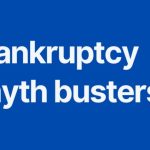
Modern technology has brought an onslaught of digital data – and with it, a new set of challenges for insolvency practitioners. Jirsch Sutherland Partner Chris Baskerville was faced with the challenge recently when he was tasked with selling intangible assets of an insolvent company.
Described as the “Netflix of short-form content”, Snackable TV was said to reach “well in excess” of two million people a month with its content streaming platform within six months of launching in December 2016. However, despite a growing youth fan base – and a $300,000 government startup loan – Chris was appointed Liquidator to the media company less than two years later.
“Unfortunately, the director had to prioritise her health at the expense of the company,” he says. “She nearly made it to the millionaires’ club.”
Representing a disruptive digital media company whose only assets are online – and in many cases hidden behind protective passwords – proved problematic from the outset.  “We didn’t know how to value this asset, because who knows what the dollar value is of one subscriber, or follower – some have said it’s $1 per – or, as I’ve learned, it is more valued on engaged followers. And then you have the additional challenge where content and data are stored in ‘the cloud’, which means you can’t control it like ordinary tangible assets,” Chris explains.
“We didn’t know how to value this asset, because who knows what the dollar value is of one subscriber, or follower – some have said it’s $1 per – or, as I’ve learned, it is more valued on engaged followers. And then you have the additional challenge where content and data are stored in ‘the cloud’, which means you can’t control it like ordinary tangible assets,” Chris explains.
While the directors are said to have injected $1.3m of their own money into developing the video portal, and did generate some revenue along the way, Chris is yet to evaluate the overall cost of the digital assets. “Again, how do you put a price on a database or social media engagement?” he says.
Quantifying digitally distressed businesses

Edward Scott, an acquisitions specialist and co-founder of Resolve – the Aussie startup Jirsch Sutherland is utilising to sell distressed businesses – says more people are looking to sell digital assets as buyers attempt to grasp how best to qualify and quantify their value.
“The key challenges for many companies is understanding just how much value is tied up in their intellectual property, understanding that value proposition, and communicating it in a way that resonates with different buyers,” explains Edward.
“We’ve had a few distressed digital businesses list on our platform and what we’ve found is that directors run them too long, which leaves very little time to sell. And effectively, a lot of value is tied up in their proprietary, or intellectual property, but they haven’t effectively communicated that.”
10 tips for protecting your intellectual property
The federal government’s IP Australia division works with a range of international agencies to build and strengthen the IP rights system. We share 10 of its top tips to help you protect your client’s priceless IP:
- Identify your IP. Intangible assets that differentiate you from your competitors include everything from your logo to an innovative new production process.
- Understand the different types of IP and the advantages of each one. For example, patents protect inventions while design registration protects their look. A registered trade mark protects brand names, logos, original sounds and scents, and even some aspects of packaging.
- Keep your idea confidential until it is protected. Use a confidentiality agreement when you’re talking to others about your idea to prevent them from disclosing your idea without permission. Protection in this manner is known as a trade secret.
- Protect your idea using the IP system to register a patent, trade mark, design or plant breeder’s right (PBR). However, make sure you consider the risks and the benefits of registered and unregistered rights.
- Where practical, build a model of your invention to help prospective financial backers to visualise your smart idea and its market potential. However, do not let anyone see it without having a confidentiality agreement in place first.
- Keep track of all your development and protection costs to help put a value on your IP and give you an idea of how profitable your venture needs to be to recover costs.
- Research your potential market and understand the likely consumers, buyers, licensees, investors, manufacturers and distributors. This will help you work out your unit cost and should give you a basis to see if your product or service is competitive.
- Get educated and take advantage of support groups such as inventors’ associations, your local business enterprise centre and government agencies for assistance.
- Work out a commercialisation strategy. There are different ways to make money from IP. You can sell it, license it or make products yourself. It might be more profitable in some cases not to manufacture your idea yourself. You can seek professional advice before entering into contractual agreements with others.
- Keep an eye out for anyone who may infringe your IP. They can erode your market share and poor-quality imitations can quickly ruin your brand’s reputation.
Your company’s IP is often irreplaceable – and in some instances, priceless. If you’ve invested significant time and resources to developing digital assets, then losing ownership of them could be much more damaging than losing tangible assets during an insolvency or bankruptcy process. Protecting them, therefore is vital.
Are you keen on becoming Australia’s next media baron or do you know someone with a penchant for producing videos? Anyone interested in purchasing Snackable TV can contact Chris Baskerville on 0439 701 568 or ChrisB@jirschsutherland.com.au











